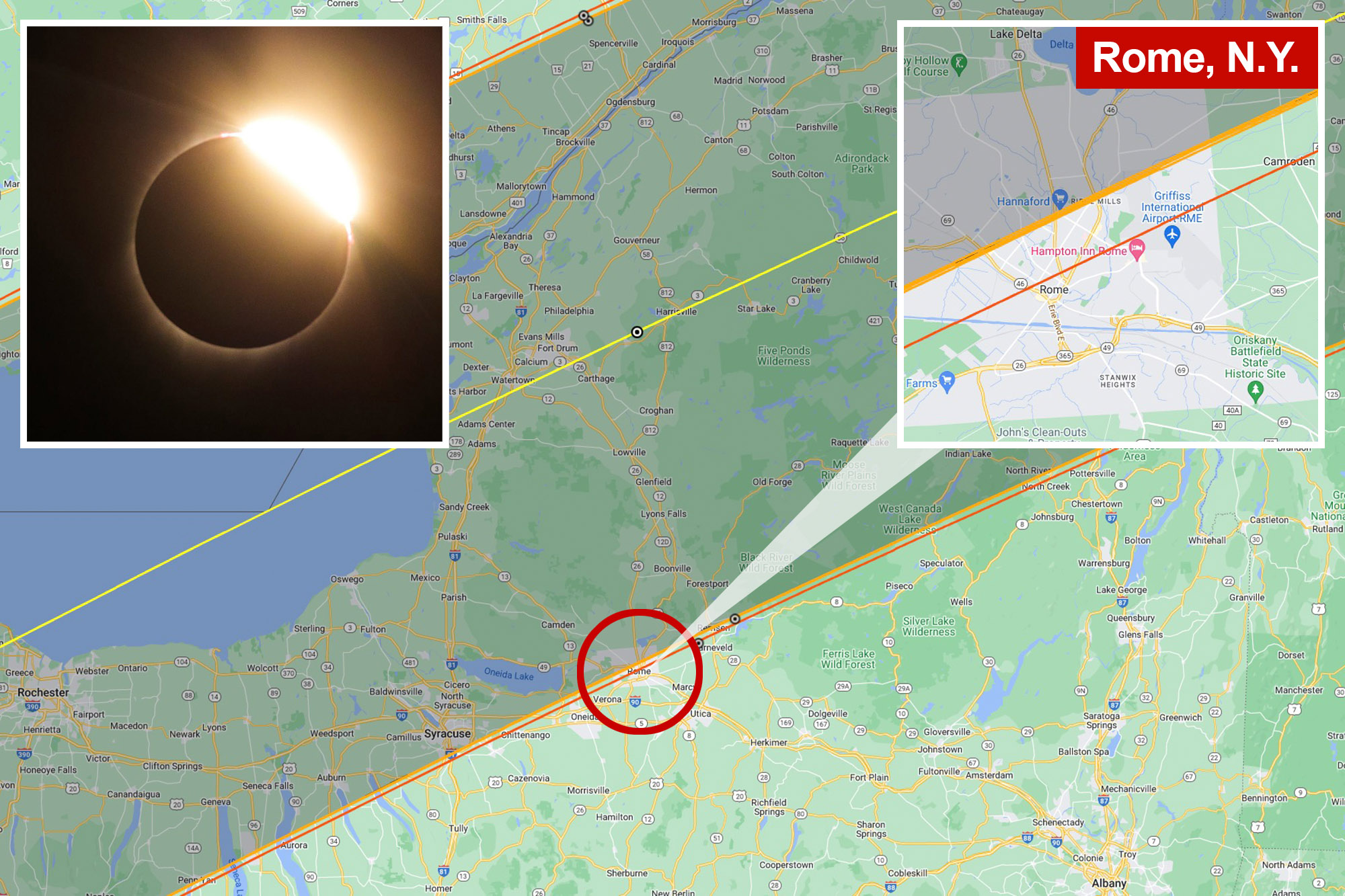
The shadow of the moon will soon glide across the United States, dimming the Sun for millions of Americans living in the solar eclipse’s path of totality — while a couple of hundred million others will bear witness to a partial eclipse Monday afternoon.
For New Yorkers living in the Big Apple and other areas outside of the zone of totality, like Westchester and Long Island, a partial eclipse will be visible — weather pending — starting at 2:11 p.m.
Meanwhile, areas upstate like Buffalo, Rochester and Plattsburgh, will experience a total solar eclipse — the moon shrouding the sun in complete darkness — for about four minutes.
In Buffalo, the total solar eclipse will begin at 3:18 p.m. EDT and end at 3:22 p.m., according to NASA.
Rochester is expected to experience the eclipse in its totality at 3:20 p.m., while it will happen in Plattsburgh at 3:25 p.m.
New Yorkers across the state will likely be able to view the spectacle — while wearing NASA-approved eclipse glasses — in some capacity between 2 p.m. and 4:30 p.m.
After leaving New York State, the eclipse will move into Burlington Vermont, where it can be viewed in totality from approximately 3:26 p.m. to 3:29 p.m., according to NASA.
It will be visible in totality in Lancaster, New Hampshire from 3:27 p.m. to 3:30 p.m. and Caribou, Maine, from 3:32 p.m. to 3:34 p.m., the agency added.
The eclipse will first make its way through Texas, where it will be seen in totality from 1:40 p.m. CDT through 1:44 p.m.
It will then make its way through Oklahoma, Arkansas, Missouri, Kentucky, Illinois, Indiana, Ohio, Pennsylvania and finally New York, Vermont, New Hampshire and Maine.
People in Tennessee and Michigan will also be able to see small parts of the eclipse.
The exact timing of the eclipse varies by where someone is located in its path.














